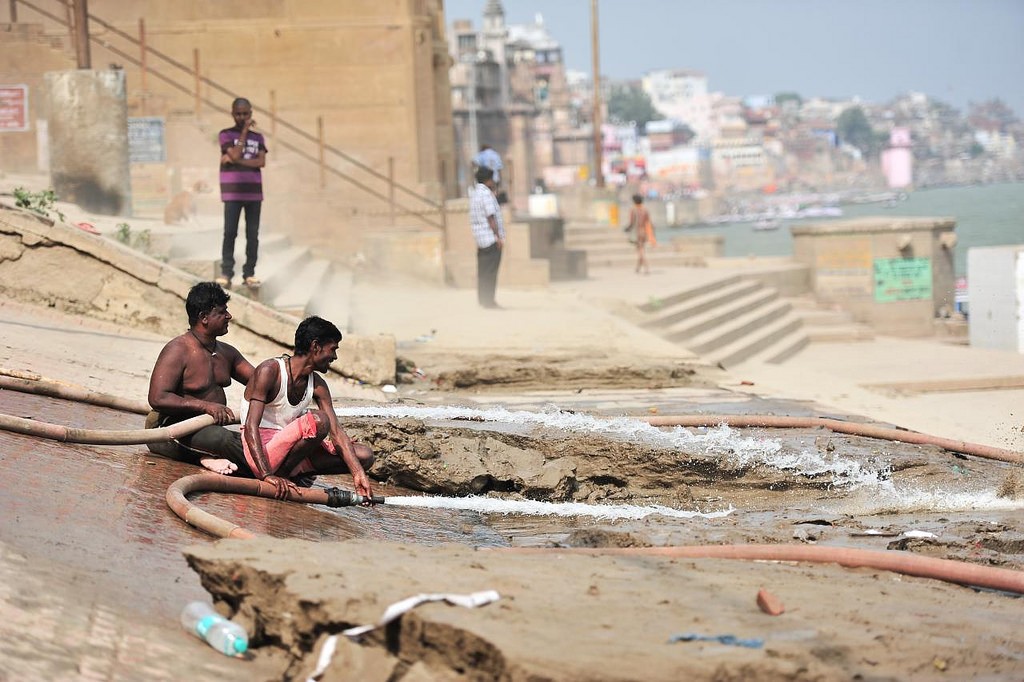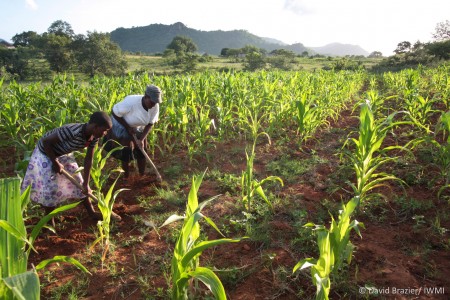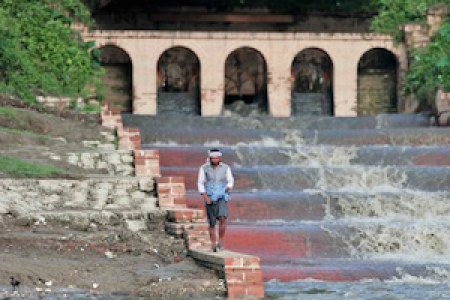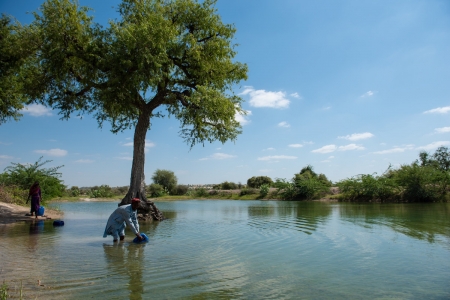Abating the huge urban and industrial pollution loads that the Ganga receives each day will require strong political will and billions of dollars. But will this be enough? Certainly not! If we want to clean the Ganga in an efficient and sustainable manner, then a strategic plan at the basin scale must also be implemented.
Since time immemorial, the river Ganga has been revered by Indians and people from all over the world, who come with a belief that taking a dip in her holy waters will rid them of their sins. It is not only a holy river but a lifeline for the 600 million people living in her basin, who rely on her waters for irrigating, drinking, generating energy and manufacturing.
Over time, unsustainable urbanization, uncontrolled industrialization and agriculture intensification, have caused the holy Ganga to become heavily polluted. The main Ganga stream receives 500 million liters of industrial wastewater, and more than 2.7 billion liters of sewage every day, of which at least 74% is untreated. Pollution makes the water generally unsuitable for traditional bathing and drinking purposes, with the exception of few upstream locations. The toxic effluents have caused significant impacts on human health and ecosystems and limited the development of the whole basin. The few partial assessments that do exist suggest that the impacts are costing billions of dollars every year.
In response, the Government of India has recently approved of the flagship “Namami Gange” program, which integrates the efforts to clean and protect the Ganga river in a comprehensive manner. The program has a budget outlay of INR 200 billion (more than USD 3 billion) for the next 5 years which incorporates the remaining budget from the Ganga Action Plan, a previous scheme to clean the river and the budget (USD 1 billion) allocated to the World Bank National Ganga River Basin Project. The Namami Gange budget is to be disbursed by the National Mission for Clean Ganga (NMCG), under the recently renamed Ministry of Water Resources, River Development and Ganga Rejuvenation.
Despite the fact that the money is there and available, the cleanup efforts have not progressed at the pace envisioned due to the enormity and complexity of options, as well as the divergence of interests amongst the stakeholders involved and changes in management. As of March 2016 only 66 million have been disbursed from the World Bank’s 1 billion budget for the Ganga restoration.
There is a need for a simplification of choices through an approachable catalogue of solutions that can be standardized for all decision makers in all Ganges river basin regions. The Ganga River Basin Management Plan produced by a consortium of Indian Institutes of Technology, based on secondary data, is a commendable step towards this direction. But it can still be strengthened further.
A robust strategic plan at the river basin scale can add on to the existing strategy. An overall basin plan as such, could collect and process data for a rigorous and shared diagnosis, identify pollution hotspots, and set river health objectives for every stretch of the river. These objectives would include the desired water quality (with specific guideline values) as well as the desired flows in every month of the year. Once these objectives are set, the plan would provide a catalogue of solutions, including environmental flows restoration and pollution abatement from point and non-point sources, and assess what is the most cost-effective and sustainable combination of solutions for every stretch, as opposed to selecting solutions at whatever cost. The plan would set a robust road map that could be sequentially implemented by decision makers despite changes in management, prioritizing investments in a transparent manner.
Such diagnosis and river basin planning requires data generation, river basin modelling and stakeholder engagement, which at the same time requires resources, time, and a dedicated knowledge institution to lead the process. The resources are there, and the best time to start is now – Now the ball is in India’s court.
Sources and further information:
- CPCB (2013a) Pollution assessment: River Ganga. Central Pollution Control Board. Delhi.
- CPCB (2013b). Performance Evaluation of Sewage Treatment Plants under NRCD, Central Pollution Control Board, India
- Tare V, Roy G and Bose P (2015) Ganga River Basin Management Plan (2015). Main document. Indian Institutes of Technology of Bombay, Delhi, Guwahati, Kanpur, Kharagpur, Madras, Roorkee.









